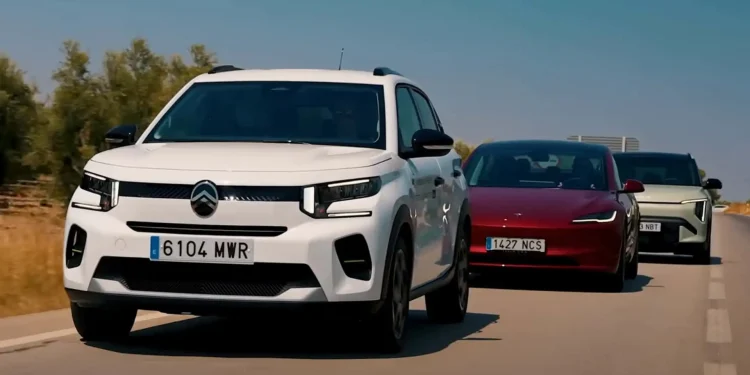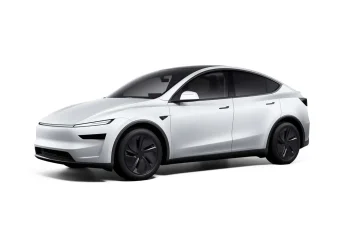Tesla Loses Most Range when electric vehicles face extreme heat, as confirmed by a real-world test in southern Spain. Conducted at highway speeds and peak temperatures of 111°F (44°C), the test compared Tesla’s Model 3 Long Range with the Kia EV3 and Citroen e-C3.
The Test Conditions
The experiment, carried out by What Car?, explored how three EVs performed outside their ideal battery temperature window of 68°F–77°F (20°C–25°C). EVs typically lose range in freezing cold, but this trial revealed how high heat also cuts efficiency.
The vehicles tested were:
- Citroen e-C3: 44 kWh battery, 199-mile WLTP range.
- Kia EV3 Long Range: 81.4 kWh battery, 362-mile WLTP range.
- Tesla Model 3 Long Range: 80 kWh battery, 436-mile WLTP range.
Both the Kia and Tesla feature liquid cooling and heat pumps, while the Citroen relies on a simpler air-cooled system.
Results of the Range Test
The Citroen e-C3 was the closest to depletion, theoretically achieving 142 miles before running out – a 28.7% drop from its advertised figure.
The Kia EV3 fared better but still saw a 32% reduction, covering an estimated 246 miles instead of 362.
However, the Tesla Model 3 Long Range performed worst, losing 44% of its claimed range, managing just 244 miles. Interestingly, Tesla still had the best efficiency at 3 miles/kWh, but air conditioning demands from its glass roof significantly impacted results.
Charging in Extreme Heat
Surprisingly, charging performance remained relatively strong despite the scorching temperatures.
- Tesla Model 3: 9% to 80% in 32 minutes, close to its 27-minute claim.
- Kia EV3: 10% to 80% in 31 minutes, just 3 minutes longer than official times.
- Citroen e-C3: slower due to limited charging hardware, taking 74 minutes from 3% to 80%.
This outcome showed that while extreme heat slashes range, modern EVs with advanced thermal management systems still maintain reliable charging speeds.
Conclusion
The study proves that Tesla loses most range under extreme heat compared to rivals, despite strong efficiency per kWh. Meanwhile, Kia managed better balance, and Citroen lagged due to its simpler cooling design. The findings highlight how temperature extremes, driving conditions, and vehicle design play critical roles in EV performance and efficiency.











